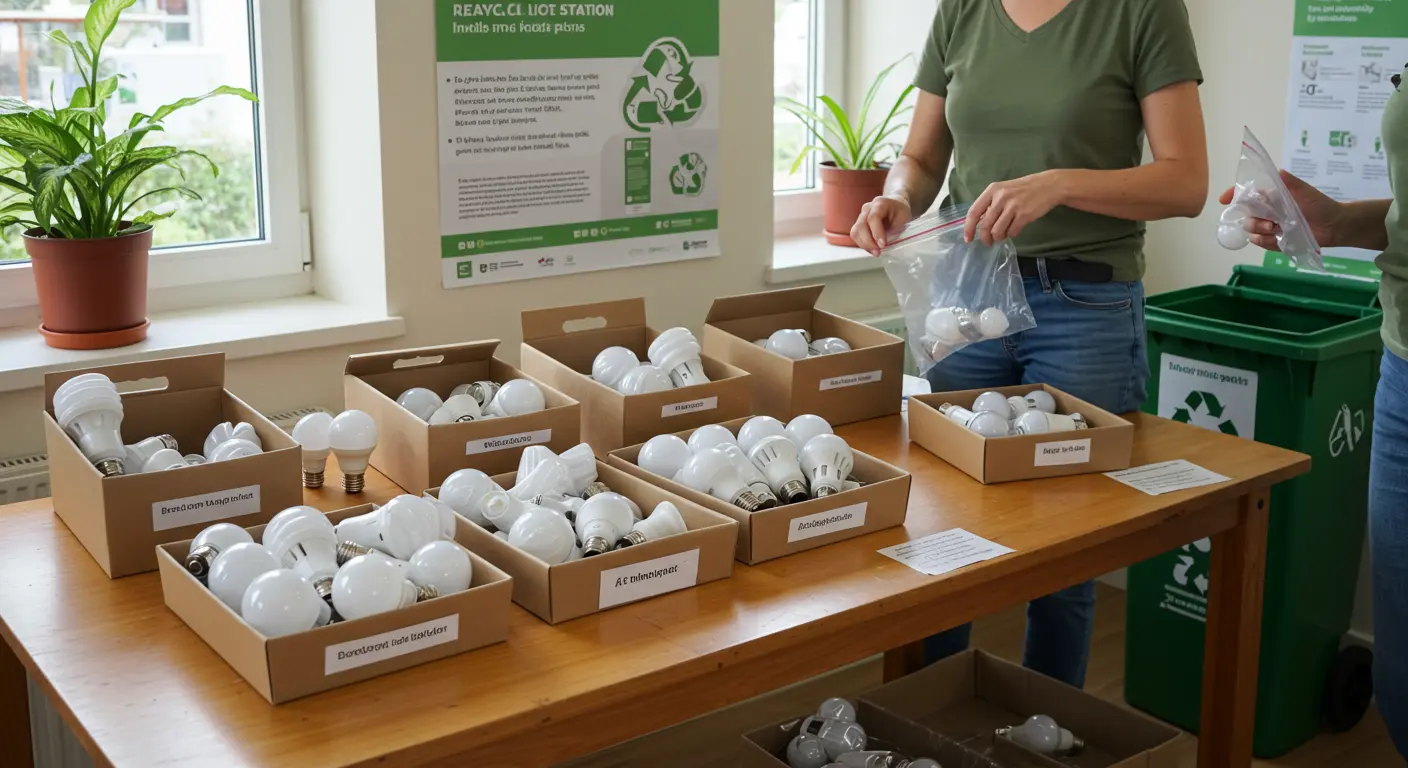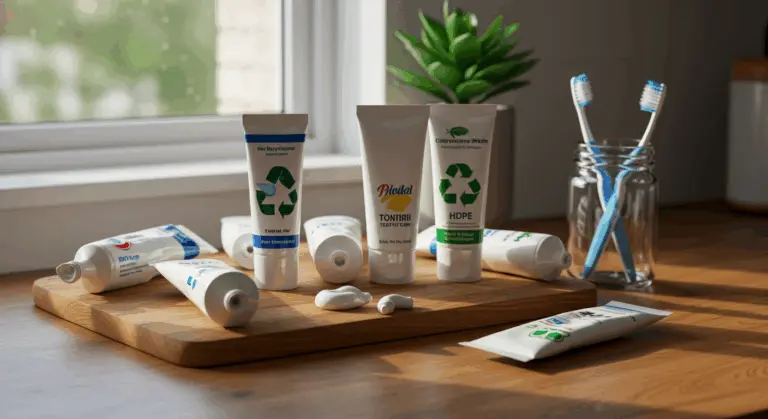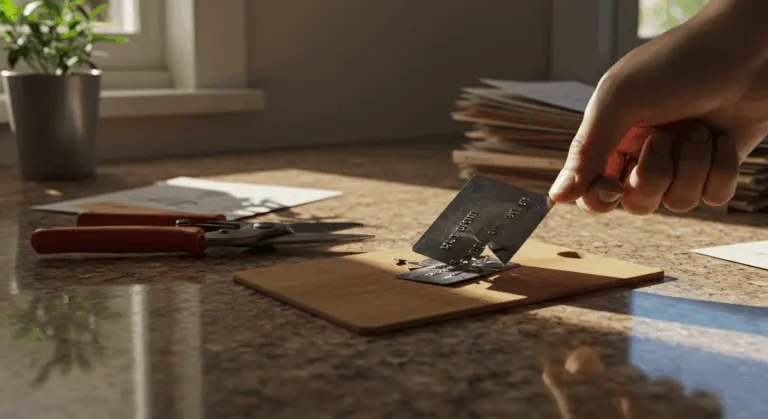Why Recycling LED Bulbs is Important
LED bulbs excel as leaders of energy efficiency and longevity, yet they demand thoughtful disposal when their brilliant service ends. Why does recycling matter? These reasons stem from both environmental protection and economic benefits.
Though LED bulbs serve as cleaner options to mercury-laden fluorescent counterparts, they harbor their own disposal challenges. These innovative lights house sophisticated microchips containing trace amounts of heavy metals—lead and arsenic among them. When dumped in landfills, these metals can seep into soil and waterways, creating environmental hazards that ripple through ecosystems.
Recycling makes a real difference: up to 95% of LED components can be recovered and reused. Valuable metals, pristine glass, durable plastics—all can find new purpose. This process reduces demand for virgin resources while keeping materials productively cycling through our economy.
Mercury-free by design, LEDs sidestep the most notorious hazard of fluorescent lighting. Their electronic components still benefit from proper recycling, which recovers valuable materials and protects the environment.
Types of Light Bulbs You Can Recycle
Understanding recycling options means knowing which bulbs welcome a second life and which demand special care. Each type contains different materials that shape both recallability and handling protocols.
-
LED Bulbs: Highly recyclable, with up to 95% of their components being recoverable. They do not contain mercury, and their glass, plastic, and metal parts can be repurposed.
-
Compact Fluorescent Lamps (CFLs): Recyclable, but require special handling due to their mercury content. Specialized programs exist to manage this hazardous material safely.
-
Incandescent Bulbs: Generally not accepted by recycling programs because the small amounts of metal and glass are difficult to separate cost-effectively. They can typically be disposed of in household trash.
-
Fluorescent Tubes: Contain mercury and must be recycled through specialized programs. Handle them carefully to avoid breakage and the release of mercury vapor.
-
Halogen Bulbs: Similar to incandescent bulbs, they are often disposed of in regular trash, though some specialized recyclers may accept them.
How to Prepare LED Bulbs for Recycling
Proper preparation helps ensure your LED bulbs get recycled effectively. Simple steps help facilities process them efficiently and recover valuable materials.
-
Remove and Cool: Carefully remove the bulb from its fixture and let it cool completely.
-
Protect from Breakage: Wrap each bulb in newspaper or place it back in original packaging to prevent breakage. Nest multiple bulbs in a robust box. If a bulb breaks, collect all pieces in a sealed plastic bag with clear labeling.
-
Keep It Clean: Skip the tape and aluminum foil—these create headaches for recycling equipment. Resist the urge to dismantle components; facilities have the right equipment for safe disassembly.
-
Check Drop-off Rules: At retail or municipal locations, confirm the specific drop-off procedure—whether to use a designated bin or hand the bulbs to staff.
Where to Recycle LED Bulbs
Finding places to recycle LED bulbs is easier than you might think. Multiple pathways exist—from neighborhood retailers to specialized facilities—so your old bulbs don’t end up in landfills.
-
Local Recycling Centers: Check your city or county’s waste management website for dedicated e-waste facilities or collection events.
-
Major Retailers: Stores like Home Depot, Lowe’s, and IKEA often have in-store collection bins for light bulbs, typically near the entrance.
-
Mail-Back Programs: Several companies offer pre-paid containers for mailing used bulbs to a recycling facility, which is ideal for large quantities or remote locations.
-
Online Directories: Websites like the EPA’s and Earth911.com provide searchable databases to find certified recycling locations near you by zip code.
-
Specialized E-Waste Recyclers: Facilities that focus on electronic waste are equipped to handle LED bulbs and other electronics, offering a one-stop solution.
Understanding the Recycling Process for LED Bulbs
LED bulbs go through an interesting process once they reach recycling facilities. This goes beyond simple disposal—it’s a way to recover useful materials and protect the environment.
The process starts with mechanical breakdown. Specialized shredding machines methodically fragment LED bulbs into manageable pieces—an important step that allows for effective separation.
Glass components emerge first from this technological symphony. Advanced separation technology sorts between glass types, preparing them for melting and rebirth in new products. Plastic elements—bases, internal housings—follow suit, ready for use in new manufacturing.
Most valuable of all is metal recovery. Aluminum and copper are extracted from heat sinks and connectors, while electronic chips undergo careful processing to safely contain and reclaim trace heavy metals—lead and arsenic included.
Environmental Impact of Improper LED Bulb Disposal
When LED bulbs tumble into landfills instead of recycling centers, they create serious environmental problems that extend far beyond their small size. Despite their eco-friendly reputation during operation, incorrectly disposed LEDs can cause long-term harm on our planet.
The main concern is the release of hazardous materials. LED electronics harbor trace amounts of toxic substances—lead, arsenic, nickel—that cause problems when they leak out.
Water contamination is just part of the problem. Crushed LED bulbs release microscopic toxic dust into the atmosphere—particles laden with heavy metals that ride wind currents across landscapes.
Beyond contamination, there’s also tremendous waste. Every discarded LED bulb wastes the valuable materials inside. Manufacturing replacements from virgin materials demands energy-intensive mining and production, generating carbon emissions while destroying habitats. Recycling prevents this waste.
FAQs About Recycling LED Bulbs
As more people learn about LED recycling, they often have questions about the process. Here are answers to common questions about responsible LED disposal.
Are LED bulbs actually hazardous? While dramatically safer than mercury-containing fluorescent bulbs, LEDs still house trace amounts of heavy metals like lead and arsenic within their electronics. Proper recycling prevents these substances from contaminating soil and water systems.Is recycling mandatory everywhere? Legal requirements vary, but recycling remains strongly recommended regardless of local mandates. It saves valuable materials, reduces landfill waste, and avoids the environmental cost of manufacturing from virgin resources.What local regulations govern LED disposal? Municipal requirements vary dramatically. Some jurisdictions mandate special recycling facilities or designated collection points, while others schedule periodic hazardous waste collection days. Check your local waste management authority’s website to learn about your area’s specific requirements.What if my local center won’t accept LEDs? Don’t worry—you have other options. Scout for drop-off bins at major hardware retailers like Home Depot or Lowe’s, explore mail-back services, or locate specialized e-waste facilities in your region.Should I wrap bulbs before recycling? Absolutely—protective wrapping prevents transport damage. Already broken? Seal every fragment in a plastic bag. Skip the disassembly work; recycling facilities possess the specialized equipment for safe component separation.Do recycling incentives exist? Some retailers offer small discounts when you exchange old bulbs for new ones. Certain manufacturers operate take-back programs offering additional perks. The real benefit goes beyond money—you’re helping the environment and preventing pollution.




